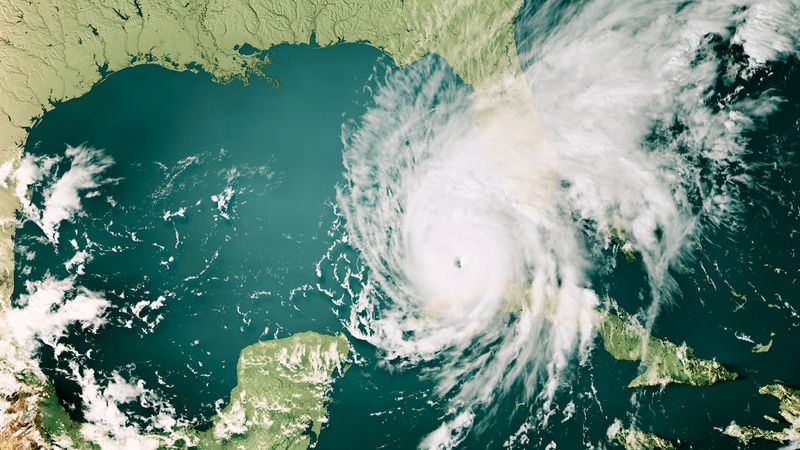AI For All Phases of Disaster Management
Texas A&M researchers are using AI to improve the management of disasters like hurricanes before, during and after the events.

Image: Getty Images
This article was first published on
engineering.tamu.eduThis article was discussed in our Next Byte podcast.
The full article will continue below.
Hurricane season is here, with Hurricane Beryl already leaving a trail of damage after hitting Texas’ shorelines. The National Oceanic and Atmospheric Administration (NOAA) is predicting a record number of named storms in the Atlantic this year. As these events continue to increase, it’s imperative to find solutions to help manage the inevitable hazards.
Dr. Ali Mostafavi, associate professor in the Zachry Department of Civil and Environmental Engineering at Texas A&M University, and his research team have been utilizing artificial intelligence (AI) to address disaster management through each phase of a hazard event. They want to bring cutting-edge AI to the forefront of community resilience and disaster management efforts.
AI has become a very popular evolving technology, especially in research. When given large amounts of data, images or text, it can identify and analyze key features much quicker than a whole team of people.
Mitigation and Preparedness
A crucial step of the mitigation phase of disaster management is assessing risk to communities. Hurricanes bring significant flooding risks, but current flood risk assessments can be time-intensive and costly.
Mostafavi’s team developed a machine-learning model called Flood Genome that determines flood risk in different communities based on factors like hydrological, topographic and built environment features. Just like genetic features can indicate health risks for people, Flood Genome analyzes different features of communities to assign flood risk levels.
“We used historical flood damages from the National Flood Insurance Program to test this model to determine how well it can predict high-risk areas, and the model performed beautifully,” Mostafavi said. “It can inform flood mitigation and community resilience efforts by understanding the flood risk level of different areas.”
Another AI tool developed by the Mostafavi lab, called Elev-vision, determines the lowest floor elevation of structures using Google Street View images.
For a city like Houston, with hundreds of thousands of properties, surveying each property with traditional methods is not feasible. This new tool significantly cuts labor and expenses and provides updated vital information on flood risk to properties.
Response and Recovery
Response efforts would ideally start before an event develops, but the fast-paced nature of a hurricane makes evacuations and supply distribution difficult to manage. The research team has developed solutions to this problem as well.
“We leverage location-based data and graph analytic methods to determine the preparedness and evacuation patterns of communities before a hurricane or storm arrives and provide that in near-real-time to decision-makers to understand what areas have or have not evacuated,” Mostafavi said.
He added that not only can this new technology tell which areas have evacuated, but it also monitors which routes and destinations are being used the most. Getting accurate and timely evacuation information to decision-makers would greatly improve public safety before and during disasters.
This tool can also determine a community’s preparedness before a storm arrives. By analyzing patterns of human mobility and visitations to grocery stores, it can gauge how prepared a community is to weather the storm.
Quick response efforts can also impact recovery after events.
Rapid damage assessments in the wake of disasters are vital to making more resilient communities. This can lead to faster local and federal aid. The team’s AI research tackles this issue by using satellite images and computer vision techniques to classify properties based on the extent of damage.
Many of the models and tools Mostafavi’s team developed were tested during or after previous events like hurricanes in Florida and Louisiana, and all performed very well.
“AI technologies can improve resilience capabilities of communities at different stages,” Mostafavi said. “We see AI as the next defense barrier against disasters because it improves risk mapping, situational awareness and impact assessment.”
There may not be a long wait for these improvements since the team has already begun a start-up company and developed prototypes to commercialize these technologies for public use.
Mostafavi and his team have been working extensively on AI disaster management for many years, resulting in numerous publications and innovations.
